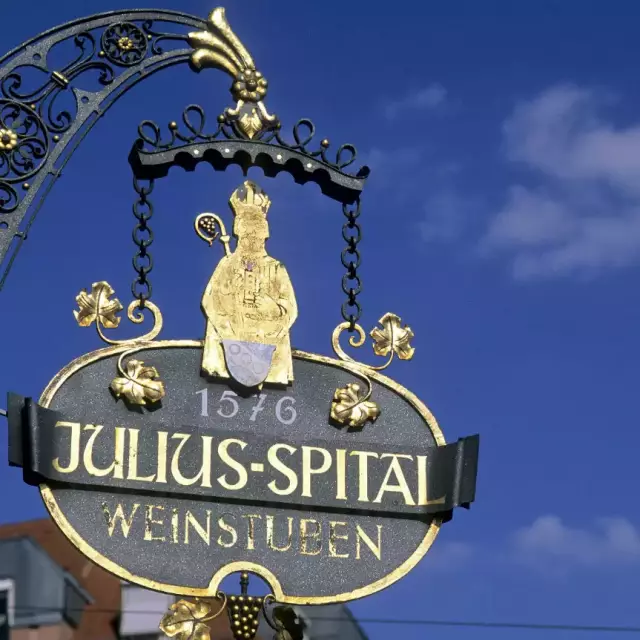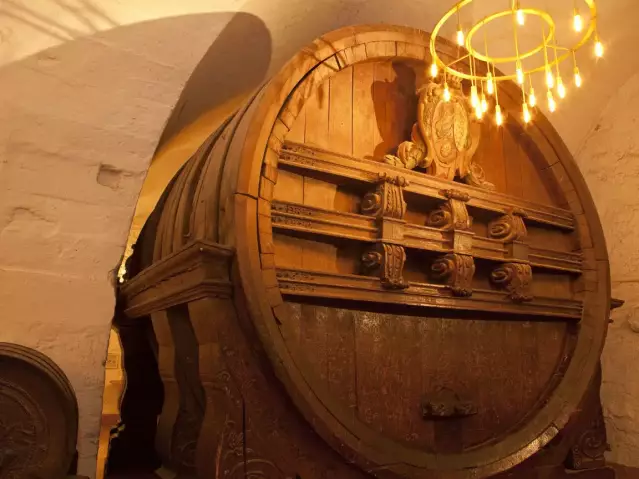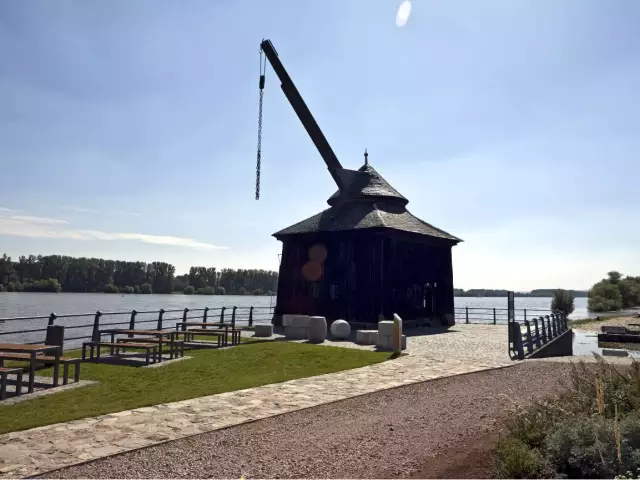Juliusspital

Probably the oldest depiction of a "Bocksbeutel" appears right in the middle of a 16th-century stone relief mounted on an exterior wall of the Juliusspital.
Maybe it was meant to symbolize a medical flask but it could also have been a wine bottle, a forerunner of the “Bocksbeutel” as we know it today: a flattish, spherical-shaped bottle with a short neck. In any case, the bulbous vial in the relief is regarded as the first documented evidence of a bottle so shaped. The relief actually commemorates the foundation of the Juliusspital in 1576. Its charter is inscribed on the stone.
It was Julius Echter von Mespelbrunn, prince bishop of Würzburg, who donated his personal property to fund the foundation. A huge stretch of gardens and lakes, situated right in front of the city's gates, was bought and transformed into the new establishment. His stated goal was to “care for and treat all sorts of poor, sick, destitute and injured people who need medicine for wounds and other forms of illnesses, as well as abandoned orphans, pilgrims en route, and other persons in need." The cornerstone was laid on 12 May 1576, and the prince bishop ensured its maintenance with a deed of gift, e.g. fields, forests, and vineyards – including parcels within the world renowned site Würzburger Stein.
To this day, the Juliusspital cares for the sick and elderly – in a hospital center with 365 beds; a retirement home; and a counseling center for epileptics. These are supplemented by an academy for palliative medicine/care and hospice work, as well as teaching facilities for nursing, geriatric care, and intensive care. A convention center, a large agricultural enterprise, and extensive forests also belong to the foundation – and, of course, the wine estate with its 172 hectares of vines, making it the second largest wine estate in Germany. The heart of the estate is the cask cellar (250 meters in length) beneath the palatial “prince’s building” designed by Antonio Petrini in 1699. This is where the estate’s great wines are produced, wines that have long enjoyed world renown. A Juliusspital wine, for example, was served at the coronation of Queen Elizabeth II in 1953: 1950 Riesling Auslese from the slopes of the Julius-Echter-Berg site in Iphofen. Naturally, it was bottled in a Bocksbeutel, the traditional wine bottle of Franken today.
The shape of the Bocksbeutel is ancient. Among the Celtic relics (ca. 1400 BC) unearthed in Franconian soil near Aschaffenburg is a round, flattish clay bottle, which is regarded as a Bocksbeutel prototype. The Romans also used a similarly shaped container as a canteen, and in the Middle Ages, it was popular with pilgrims: shaped like a “flat, round cheese,” it could be hung from the belt without impeding the carrier.
In 1726, in its fight against the widespread practice of watering down or otherwise manipulating wine, the city council decided to use the Bocksbeutel as a mark of quality to distinguish their “pure” wines. The earliest examples were cellared in the Bürgerspital. In 1862, the Bocksbeutel was described as “an embossed, round bottle shaped like a goat’s scrotum in which to bottle and ship Steinwein.” Today, it is the trademark of Franconian wine, and since 1989, officially registered and protected by law for Franconian quality and Prädikat wines.




